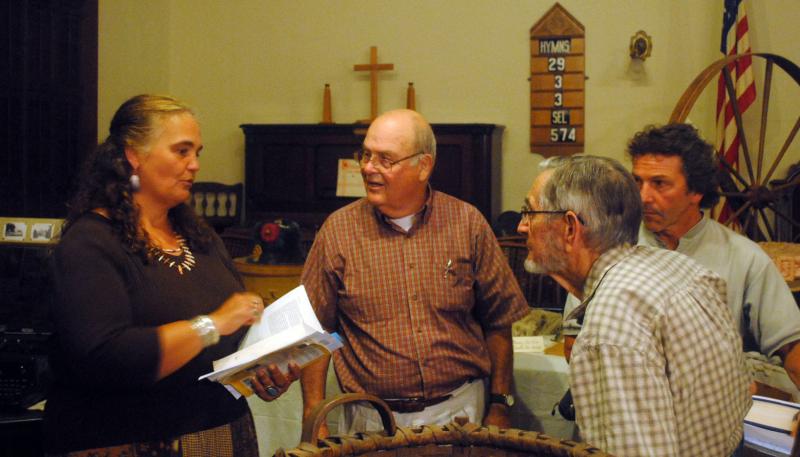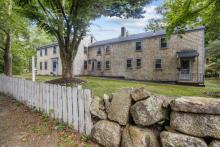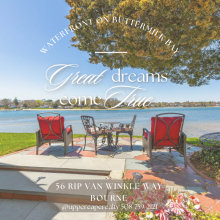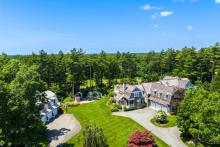Wampanoag historian visits Rochester Historical Society
The history of Native Americans in the area is fascinating, but Wampanoag historian Cora Peirce says it has quickly become a lost relic.
Peirce, a Fairhaven resident, spoke at the East Rochester Church and Museum Wednesday night about various Indian paths and trails throughout Marion, Mattapoisett and Rochester and also brought artifacts to display. The Rochester Historical Society hosted the discussion.
“This area is vitally important,” Peirce said. “There were hundreds of thousands of people living here centuries ago. Many of the cleared lands around Rochester were done by hand. You’d never know that in many of the places you travel, you’re not the first to be there.”
Peirce said she began working with the history and genealogy of tribes in the area after learning about her father’s bloodline. Many of her efforts and research has gone to preserving land across the South Coast.
Multi-purpose stones, a seed carrier and a messenger band were just a few of the relics displayed for the packed house. Peirce explained the band, a decorative piece made from conch shells, was put on a tribe member’s arm to allow safe passage through other territories. The stone, which could be used for grinding medicine or burning sage, was also a crowd pleaser.
She did add that, unfortunately, progression of civilization and industry has taken away much of the region’s history.
“Many of the first town dumps were the sites of burial grounds,” she explained. “It’s difficult to celebrate knowing where some of these sacred and historic sites are, because they’ve been desecrated.” Among the natural resources Peirce talked about were the Quequechan River waterfalls—which gave name to the city of Fall River—being covered by textile factories.
“We don’t necessarily honor the land like we should,” Peirce said. “There are so many things in our backyard, yet we forget why it’s there or where it came from. We must be thankful for the people that gave us ‘God’s Country,’ as the [popular] bumper stickers say.”
Peirce did, however, say she was excited to hear that bears have been spotted in the area. Haskell Swamp, located between the three towns and north of I-195, is commonly known as ‘Little Bear Swamp’ and ‘Big Bear Swamp.’
Marion resident Shirley Reynolds said she enjoyed Peirce’s presentation.
“I always enjoy learning about the land and Native American history,” she said. “The seed carrier and messenger band were fascinating. And to get something that old is really something. Everything was just interesting.”















